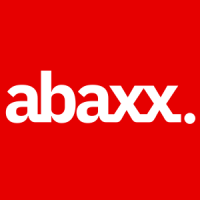Описание iShares MSCI Global Gold Miners ETF
Этот ETF предлагает инвесторам доступ к некоторым из крупнейших золотодобывающих компаний в мире, тем самым обеспечивая то, что можно назвать «косвенным» воздействием цен на золото. RING отличается от конкурентов, таких как GDX, тем, что предлагает международную экспозицию; базовые активы распределены как по развитым, так и по развивающимся рынкам. Поскольку прибыльность золотодобытчиков зависит от преобладающей рыночной цены на товары, которые они продают, эти запасы, как правило, сильно коррелируют с движениями спотовых цен на золото.
Подробнее Когда цены на золото растут, золотодобытчики зарабатывают больше денег (и наоборот). Однако следует отметить, что эти отношения не идеальны; в определенных условиях акции золотодобытчиков и цены на физическое золото могут двигаться в противоположных направлениях, и корреляция между ними может быть не идеальной. Есть ряд потенциальных преимуществ инвестирования в золото через акции. Некоторым инвесторам трудно понять, что физическое золото никогда не будет распределяться или генерировать денежный поток; акции золотодобывающих компаний приносят дивиденды и отражают прибыль, что может упростить оценку. Кроме того, акции золотодобывающих компаний, как правило, торгуются по спотовым ценам на золото с использованием заемных средств; инвесторы, стремящиеся увеличить свои позиции, могут предпочесть использовать акции вместо физического металла. RING - безусловно, самый привлекательный ETF для золотодобывающих компаний, доступный с точки зрения затрат; этот фонд взимает всего 0,39% расходов по сравнению со следующим самым дешевым продуктом, GDX, который стоит 0,53%. Подобно GDX, этот ETF содержит ряд диверсифицированных горнодобывающих компаний, которые получают доходы от металлов, помимо золота. Инвесторам следует рассмотреть GGGG, поскольку он предлагает более чистую игру в секторе добычи золота за счет холдинговых компаний, которые получают значительную часть своих доходов от предыдущего желтого металла.
 Newmont Mining
Newmont Mining Agnico Eagle Mines Limited
Agnico Eagle Mines Limited Abaxx Technologies Inc.
Abaxx Technologies Inc. Wheaton Precious Metals Corp.
Wheaton Precious Metals Corp. Kellogg Company
Kellogg Company Zijin Mining Group Company Limited
Zijin Mining Group Company Limited Gold Fields Limited
Gold Fields Limited Alamos Gold Inc.
Alamos Gold Inc. Telegram
Telegram